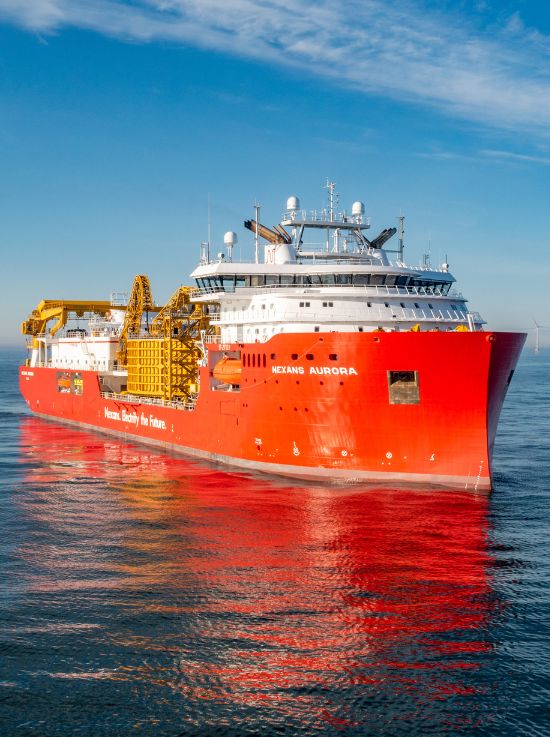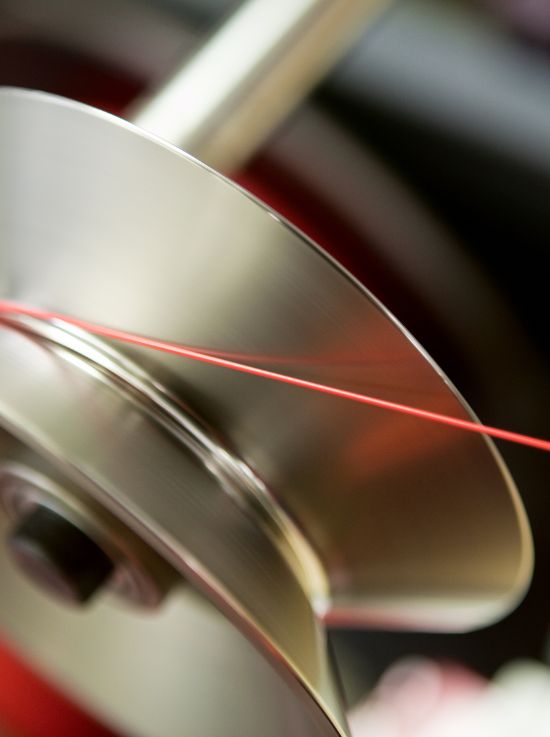Acting on our environmental impact

Improving the net environmental impact of power cables
Nexans and the aluminum producer Trimet have developed a new material with recycled aluminum content that will reduce the carbon footprint of electrical cables.
Until now, only primary aluminum has been used in the manufacturing of electrical cables. Recycled aluminum contains impurities that adversely affect the metal’s material properties.
Melting down aluminum scrap and recycling it requires only a fraction of the energy needed to produce primary aluminum. Through their partnership, Nexans and Trimet aim to optimize the raw material supply and develop innovative new materials. Trimet is using its recycling expertise to promote circularity and turn waste into a high-quality alloy meeting strict mechanical and electrical performance requirement. With this innovation, the Nexans Group can meet our customers’ growing demand for products with a positive environmental impact.
We offer a range of low-carbon distribution cables that reduce greenhouse gas emissions by 35% to 50%, depending on the product. This reduced-impact range is the first on the French market. Its smaller footprint is due to its use of low-carbon aluminum and recycled plastic, its production based entirely in France, and a rigorous selection of suppliers based on their environmental performance.
Our goal: reduce the cable industry’s carbon footprint by taking action throughout the cable life cycle
The volume of CO2 generated to produce a kilometer of power distribution cable is currently two to three times the average annual emissions produced per person in France. The aluminum conductor is the biggest contributor to these emissions, accounting for 70% to 90% of the cable’s total footprint, followed by plastics, transportation and the manufacturing process.
To shrink our products’ carbon footprint by more than one-third, we are using low-carbon aluminum exclusively, incorporating up to 50% of recycled plastic content in insulation and/or jackets, making targeted adjustments to the manufacturing process and transportation and selecting suppliers more rigorously, based on their environmental performance.
A cable’s environmental impact also extends beyond its production. About 90% of total carbon emissions from power network cables occur after they go into service, due to energy losses, called “Joule heating”, which add up over the cables’ decades of use.
In alignment with our E3 (Economic, Environment, Engagement) performance goal, Nexans offers an array of solutions to reduce a cable’s carbon footprint throughout its life cycle:
- engineering and design services to determine the optimal cable type and cross-sections, based on the application, for the entire life cycle
- innovative cable solutions, such as the EDR MAX® medium-voltage cable, which features a reinforced sheath and can be laid directly underground without a sand layer, reducing installation-related CO2 emissions by 10%
- digital solutions to boost our customers’ productivity, such as the ULTRACKER® range
- an innovative copper and aluminum cable recycling technology provided by RecyCâbles (a joint venture by Nexans and Suez), promoting a circular economy
To enable energy distribution system operators, installers and distributors to measure and manage their carbon emissions, Nexans provides full data on our products’ environmental performance (Product Environmental Profiles, PEP Ecopassport®). The Group also performs a carbon assessment per project or per customer, on request.
Program to reduce dangerous substances in cables
All Nexans products comply with legislation relating to chemical substances, in particular, the REACh regulation (EC 1907/2016) and the RoHS directive (2011/65/EU) to better protect human health and the environment. Nexans has set an annual target to eliminate dangerous substances, which is to be achieved by implementing a dedicated roadmap and action plan.
The action plan has three phases:
Anticipate
The Innovation and Services department works with the relevant sites to monitor the chemicals being used and assess the risk of a change in classification or applicable restrictions. The Group has also established a policy banning the use of substances of very high concern in all new product development in Europe, as well as a quality procedure to implement the REACh regulation across the Group.
Innovate
Several research programs are under way to find innovative solutions to reduce and replace substances of very high concern, whose use could be subject to restrictions or authorization requirements under the REACh regulation, and to substitute substances of concern classified as hazardous to human health in Part 3, Annex VI, of the CLP regulation (EC 1272/2008).
Communicate
Through dialogue with our suppliers and customers, the Group maintains strict control over the composition of the raw materials used in the manufacturing of our products.
3
substances of very high concern (identified as such in the REACh regulation for the EU market) in Nexans products were replaced in 2023.
11
replacement projects are underway






